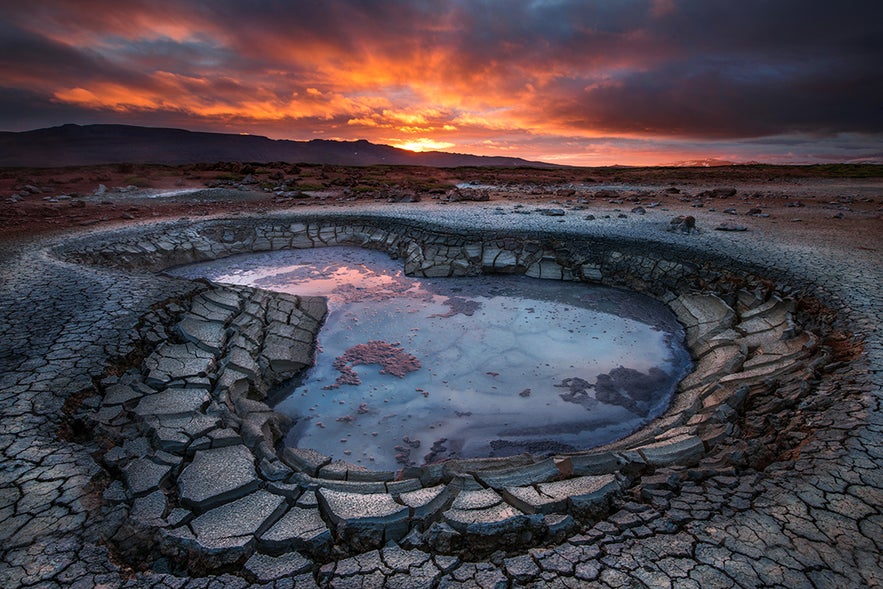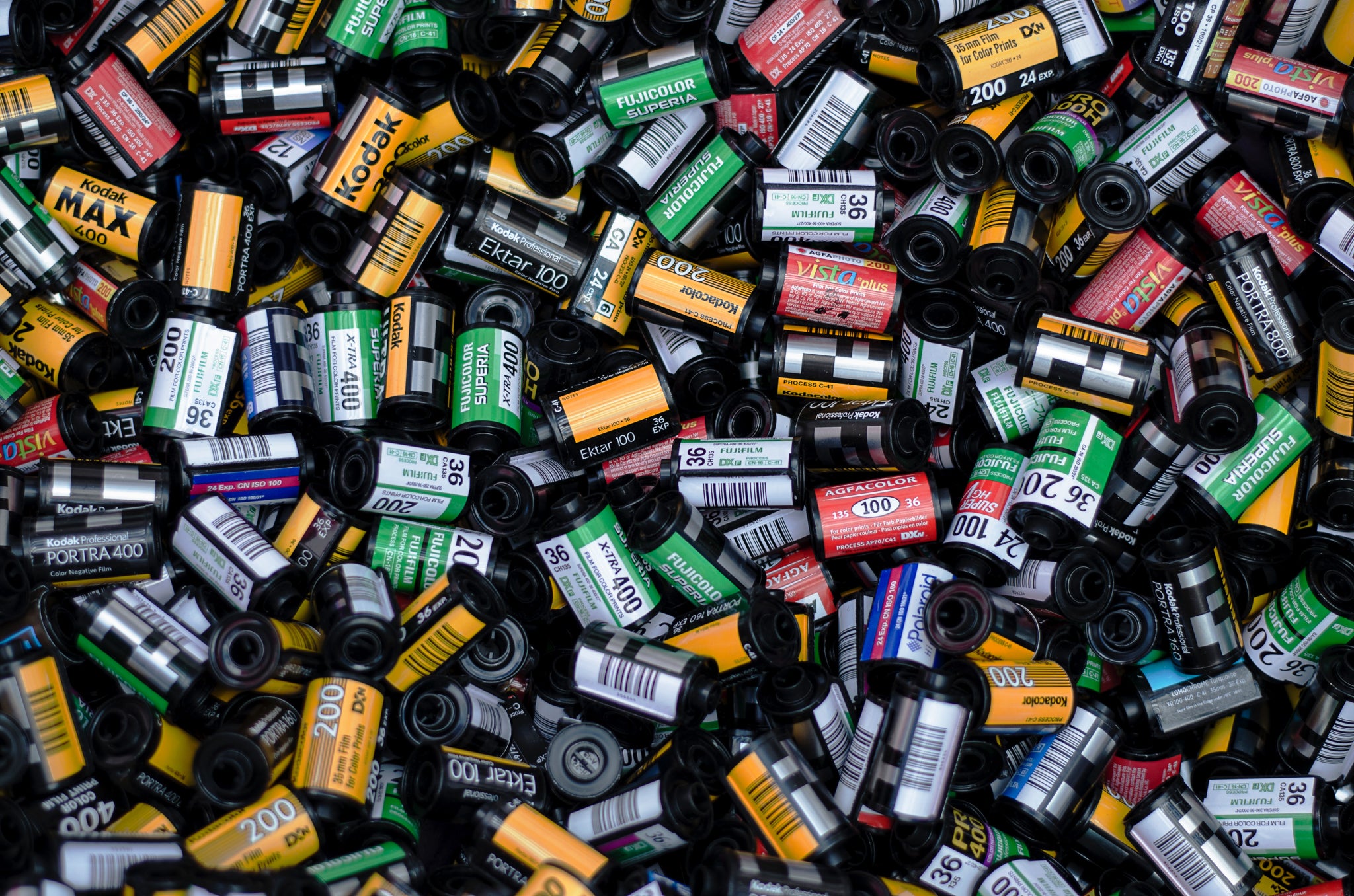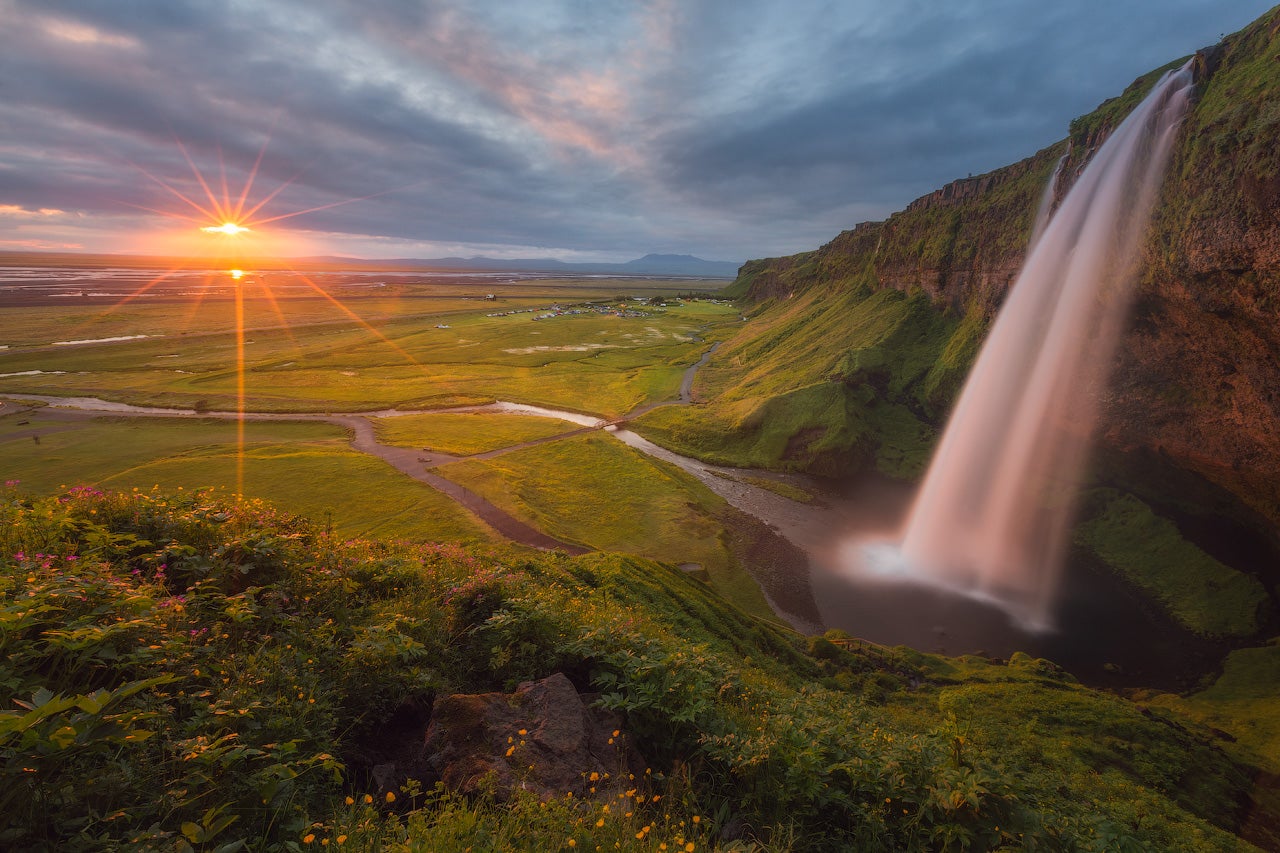
A polarising filter is an essential item in the camera kit of any serious landscape photographer who wants to take beautiful photos of Iceland. This useful tool changes the way that your camera sees and captures light, particularly in relation to reflections and glare.
- Check out these Camera and Gear Reviews
- See The Best Camera Gear Recommendations for Photography in Iceland
By using a polarising filter, you can dramatically improve your landscape photography to create images that are vibrant, dynamic and which stand out from the rest.
To get you started using a polarising filter, let’s explore the ins and outs of what they are, including what they actually do, the different effects that they have, which one to choose for landscape photos, how to use them, as well as when it is suitable to use one in Iceland to enhance your own photography.
What Does a Polarising Filter Do?
When placed in front of the camera lens, a polarising filter has the power to transform a flat, lifeless image into one with deep vibrancy and contrast. It works by darkening bright blue skies, increasing the saturation of foliage such as green Icelandic moss, and even allows you to manage reflections or reduce glare from the surface of water.
Put simply, it reduces the amount of reflected light that goes through your lens and into your camera’s image sensor, cutting out the haze while allowing your camera to capture a clearer scene. This effect is unique to a polarising filter and is not something that can be replicated in post-processing, so to make the most of it, you’d best start learning how to use a polarising filter in-field!
 A polarising filter can help you to increase vibrancy in foliage. Photo by: 'Iurie Belegurschi'.
A polarising filter can help you to increase vibrancy in foliage. Photo by: 'Iurie Belegurschi'.
Different Effects of Polarising Filters
There are two main types of polarising filters on the market – those which are warming and those that are neutral in tone. A warming polariser is excellent for shooting hazy scenes. It adds a subtle yellowish or reddish tone, which cuts through the haze to create clearer photos with a more natural appearance.
On the other hand, a neutral polariser will produce a slightly cooler tone. These kinds of polarisers allow you to maintain colour fidelity whilst highlighting the natural tones and colours of the scene.
 Effect of a polarising filter, before and after. Photo by: 'PiccoloNamek' on Wikipedia Commons.
Effect of a polarising filter, before and after. Photo by: 'PiccoloNamek' on Wikipedia Commons.
Polarising filters are not cheap, so when purchasing one, keep quality at the forefront of your mind and remember that the sharpest photos are produced by high quality glass. In short, you should put the same amount of effort into purchasing a polarising filter as you would into buying a new lens.
When purchasing a polarising filter, you can either choose one that is linear or one that is circular.
Linear polarising filters are designed to be used with manual focus film cameras. While they can polarise light more dramatically than a circular polariser, they can throw off your autofocus system and even cause metering issues. Use of a linear polarising filter may also cause dimming and colour shifts through the viewfinder of your DSLR, though the final image that you capture won’t be affected in any way. It just means that taking photographs will be a little bit more difficult, as what you see through your LCD may not be true to how it’s actually been captured.
On the other hand, circular polarisers have been developed for use with autofocus lenses and complex electronics. When purchasing one, make sure that it says ‘circular polarising filter’ on it, otherwise you might end up with one that is linear.
If you have multiple lenses with different filter sizes, just purchase a circular polarising filter that fits the lens with the largest thread. Then you’ll be able to use a step-down ring so that the filter fits the thread of your other lenses. If you are affixing the polariser to a filter holder, then you won’t have this issue as you will be able to use it across all of your lenses, provided that you have adapters to fit the filter holder onto lenses with different threads.
How to Use a Polarising Filter
First, attach your polarising filter to your lens or affix it to your filter holder.
Next, you’ll want to adjust the filter in small increments, which will allow you to see how the alterations to the filter’s position can change the overall scene. A circular polarising filter has a ring that you can rotate. To use it, simply twist the ring to activate the polarising effect. Make sure to look at your image through the viewfinder or LCD as you are turning the filter ring. You will notice that as you rotate the polariser, the level of glare and saturation in your photo will change.
The polarising effect of your filter is at its greatest when you shoot at a 90-degree angle to the sun, so it is perfect to use for compositions with side-lighting. When the sun is behind you at 180-degrees, the polarising effect will be non-existent. Between these two points, the amount of polarisation will vary. You will know once you have achieved maximum polarisation, as reflections will disappear and the contrast between the blue sky and structure of the clouds will be more prominent.
 Practice using your polarising filter under different conditions. Photo by: 'Pixabay'.
Practice using your polarising filter under different conditions. Photo by: 'Pixabay'.
As you are learning to use your polarising filter, make sure to practice under different conditions with reflections, water and the sky. Take a number of photographs of the same scene at varying levels of polarisation, from zero to maximum, in order to compare the effects. The differences should be dramatic.
An important thing to note is that once your filter is attached, it is best to always set your focus manually before rotating the polariser. This is because the front ring of the lens that the polariser is attached to can rotate while you are focusing, which can result in an accidental change in the polarising effect.
Once you become comfortable with using a polarising filter, you will find that they are useful even when there is not sky, water or reflections in your image. Keep reading, as we’ll explain a little bit below about when you can use a polarising filter in Iceland to create photos that really pop!
When to Use a Polarising Filter in Iceland?
The perfect time to use a polarising filter in Iceland is when the lighting is bright or intense – for example, during the middle of the day in any season. The brightness of daylight can mean that the colours of a scene are at risk of being washed out, so using a polariser for your landscape photography will result in deeper, more saturated colours, particularly if you are photographing the luscious green and earthy tones of the Icelandic Highlands.
 A polarising filter is perfect for enhancing tones in the Icelandic Highlands. Photo by: 'Iurie Belegurschi'.
A polarising filter is perfect for enhancing tones in the Icelandic Highlands. Photo by: 'Iurie Belegurschi'.
Using a polarising filter on our tours to the Snæfellsnes Peninsula, the Westfjords, Vatnajökull National Park or the Highlands will help you to reduce glare on the surface of the water at some very iconic locations.
Also, think about how you can use one at places like Jökulsárlón Glacier Lagoon, Lake Mývatn, Mount Vestrahorn and the almighty Goðafoss. At Jökulsárlón, you can use the polariser to bring out the colours and contrast in the pieces of ice floating about in the lagoon, whereas Vestrahorn is a great place to experiment with reflections in the water. You can either cut out the reflections altogether or use the polariser to create a mirrored effect.
 Reflection at Vestrahorn. Photo by: 'Iurie Belegurschi'.
Reflection at Vestrahorn. Photo by: 'Iurie Belegurschi'.
Experimenting with a polarising filter in these locations may also allow you to create an interesting foreground where there wasn’t one before, by cutting out glare in the water, letting your viewer see into the depths and to catch a glimpse of what lurks beneath.
Another situation in which you might consider using a polariser is to add definition to bright clouds. This technique can really make the clouds seem to pop out of the image. You can also use a polarising filter to deepen the blueness of the sky and to minimise haze from fog or temperature inversion. This will result in a much clearer photo with enhanced details.
Aside from these scenarios, you can use a polarising filter when you are trying to achieve a longer shutter speed, as these filters will naturally reduce light entering your lens by a few stops. This can help you to get that gorgeous dreamy effect on running water, like in waterfalls.
When to Avoid Using a Polarising Filter in Iceland
Although polarising filters can make your photos all the more brilliant, there are also times when they will be not very much help at all, or will make your photo look worse. Adding an extra layer of glass to your lens increases the chances of lens flare.
Furthermore, polarisers don’t tend to work that well with extreme wide-angle lenses. This is because wide-angle or fisheye lenses can cover an extraordinarily wide field of view. Therefore, if a lot of your frame includes the sky, then there’s a good chance that you’ll end up with bands of lighter and darker shades of blue.
In general, it is also not a good idea to use a polarising filter when shooting images that you will stitch together later on to create panoramas. As each image will have a different polarising effect, the final picture won’t have the polarisation applied evenly across the frame. This means that you can end up with increased banding in the sky that is difficult to fix in post-processing. So to keep your sky clear and coloured evenly, remove the polariser when you are taking panoramas.
Another situation in which you might want to avoid using a polarising filter in Iceland is when the light has intense colour, such as during the Midnight Sun season or during sunrise or sunset.
- See also: Ultimate Guide to Sunrise Photography
When the lighting is colourful or golden, removing the polariser can sometimes help you to take a better shot. It allows the colour to be reflected off wet surfaces, meaning that the colour in the atmosphere will be enhanced and your photo will appear to be more dramatic.
Of course, if you want to highlight wet surfaces or reflections, then you will also probably want to remove your polarising filter.
 Polarising filters are not recommended if you want to highlight wet surfaces. Photo by: 'Max Rive'.
Polarising filters are not recommended if you want to highlight wet surfaces. Photo by: 'Max Rive'.
Bear in mind that a polarising filter will reduce the amount of light reaching your camera’s sensor by as much as two or three f-stops, so you should avoid using one in low light situations. This includes during blue hour, when shooting at night, or when photographing the Aurora Borealis. If you want to reduce reflections in dim light or to maximise the clouds at sunset, then you will need to make adjustments by choosing a slower shutter speed, mounting your camera on a tripod, using a lower f-stop, or physically adding more light to the scene.
The final scenario in which you might consider removing your polariser is when you are shooting rainbows at iconic locations, such as the waterfalls in Iceland. Waterfalls are known for creating beautiful rainbows on sunny days, as they produce so much spray! If you are lucky, you may even catch a double rainbow.
Although you can turn the polariser in a direction that enhances the colours of the rainbow, the filter can sometimes create a ripple or unrealistic effect, especially with a wide angle lens as we mentioned before. Turned the other way, the polariser can minimise the visibility of the rainbow, making it seem dull and less vibrant. So to keep rainbows colourful and looking great in all of your photographs, experiment by having the polarising filter both on and off, as this is a situation in which the decision to use a polariser can swing either way.
 Rainbows may either be enhanced or dulled by a polarising filter. Photo by: 'Iurie Belegurschi'.
Rainbows may either be enhanced or dulled by a polarising filter. Photo by: 'Iurie Belegurschi'.
Now that you’ve got the lowdown on using a polarising filter for your landscape photography, don’t be afraid to get it out and to use it in Iceland! This essential tool will ensure that you create dramatic photos that are vibrant and dynamic, enhancing your portfolio with truly great images.
About the author: Serena Dzenis is a landscape photographer based in Iceland. You can find more of her work on her website or by following her on Facebook and Instagram.
Experiment with using a polarising filter on a photography workshop in Iceland! Check out our 8 Day Summer Photography Workshop.












